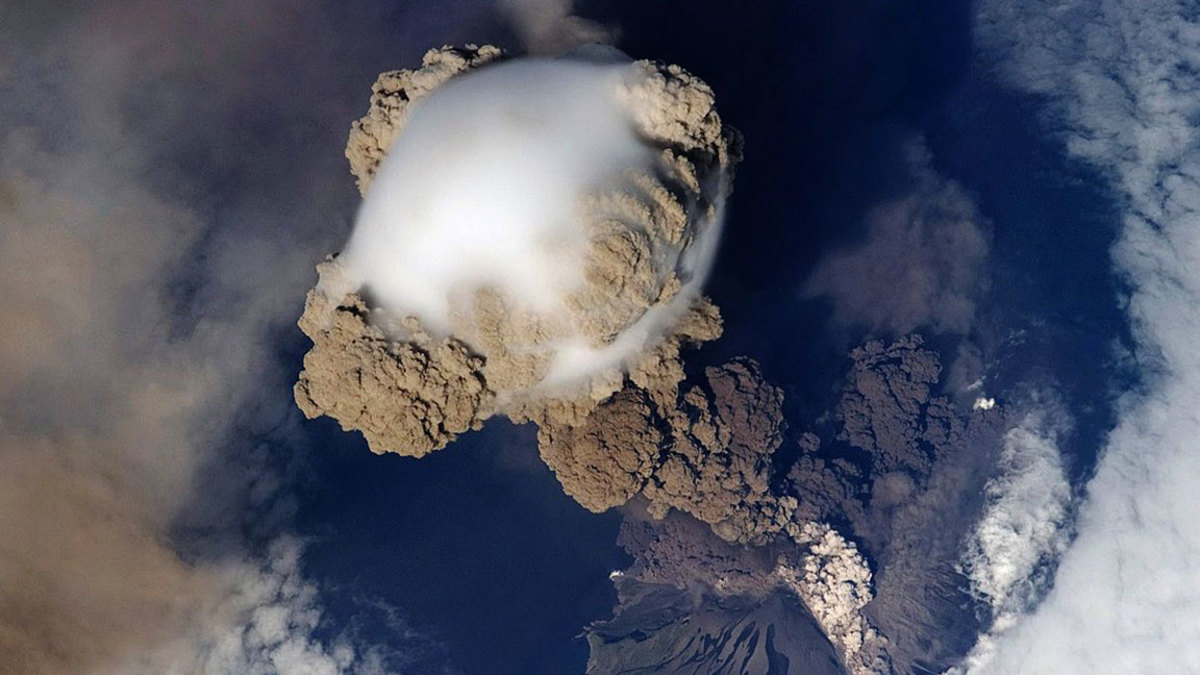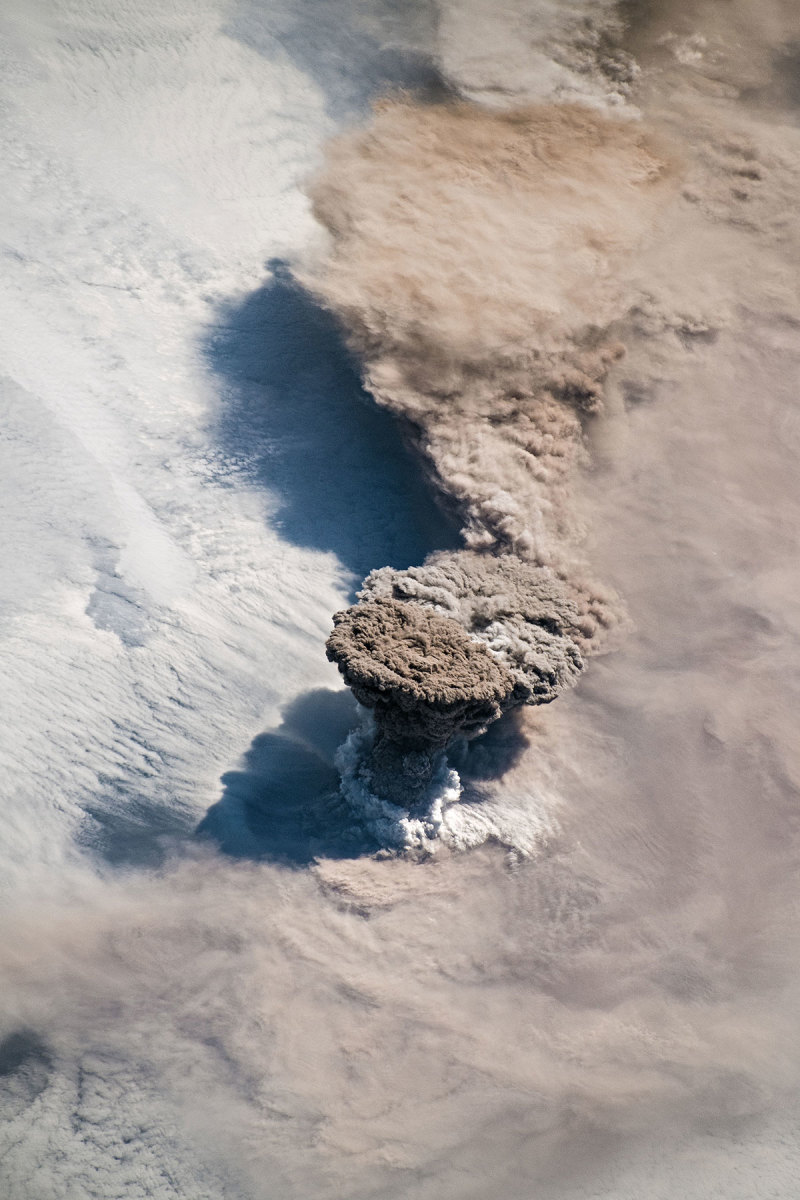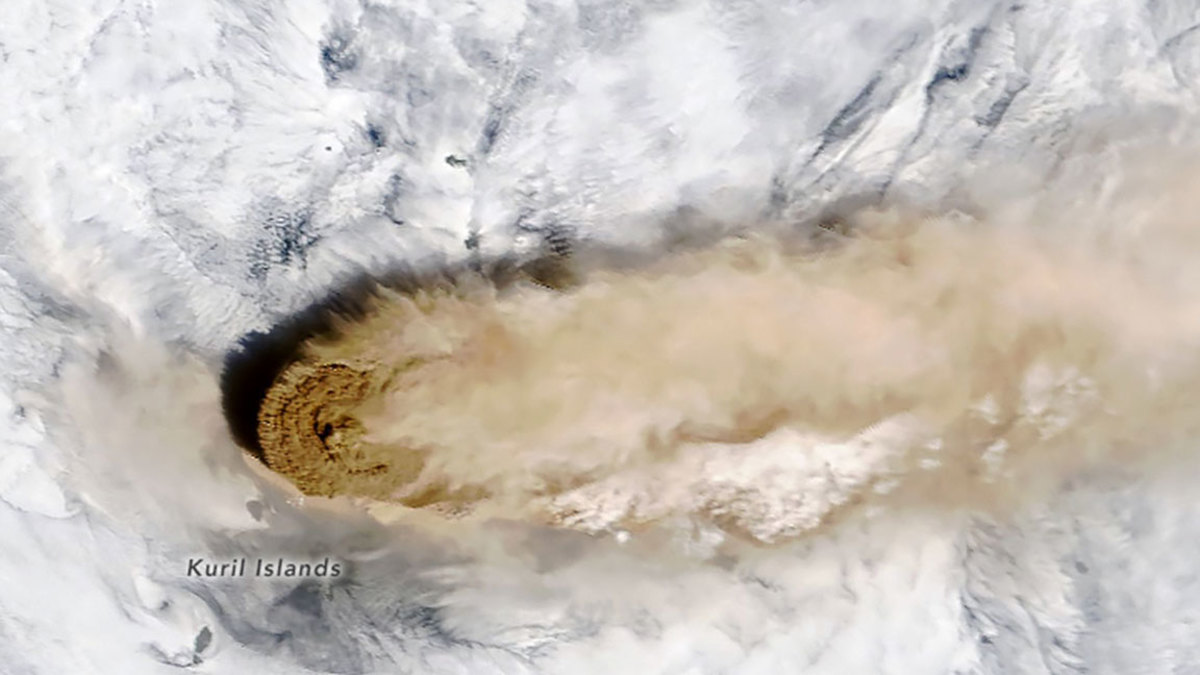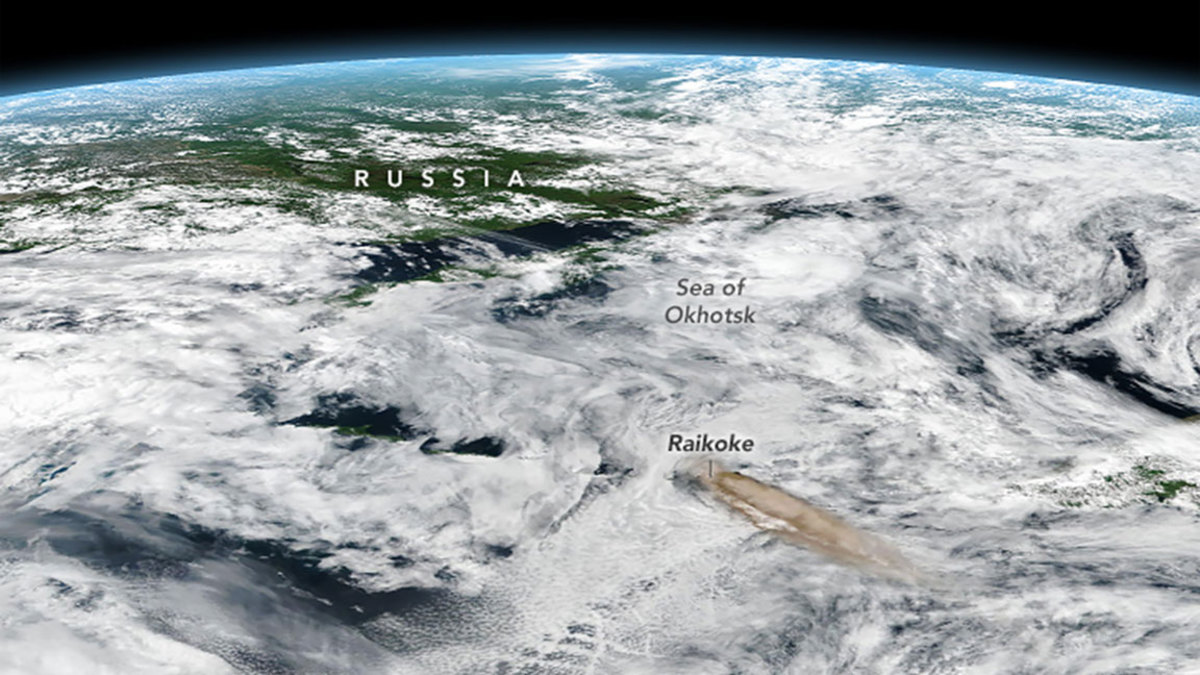Earlier this year, astronauts in the International Space Station got a front row seat for an epic event, but it wasn’t happening in space. On June 22, the astronauts looked down at the earth and saw the Raikoke Volcano erupting, which led to some incredible images captured by NASA and other satellites.
It was very rare sight—the Raikoke Volcano most recently erupted back in 1924, according to the National Museum of Natural History. Before the 1924 event, the volcano hadn’t had a recorded eruption since 1778. The volcano is located on an uninhabited island in the middle of the Kuril Islands chain between Japan and mainland Russia, and it reaches 1,808 feet at its highest point.
An unexpected series of blasts from the remote #Raikoke volcano in the Kuril Islands sent ash and volcanic gases streaming high over the North Pacific Ocean. https://t.co/ptL4i4dNOH #NASA pic.twitter.com/XAUziKxurK
— NASA Earth (@NASAEarth) June 24, 2019
The volcano has a 700-meter-wide crater and the explosion created a large plume of ash and gas that reached between 13 kilometers (8 miles) and 17 kilometers (10 miles) into the sky, according to NASA’s report on the eruption.
“What a spectacular image. It reminds me of the classic Sarychev Peak astronaut photograph [see photo below] of an eruption in the Kuriles from about ten years ago,” said Simon Carn, a volcanologist at Michigan Tech, in a NASA statement about the volcanic eruption. “The ring of white puffy clouds at the base of the column might be a sign of ambient air being drawn into the column and the condensation of water vapor. Or it could be a rising plume from interaction between magma and seawater because Raikoke is a small island and flows likely entered the water.”

Here are a few more of the incredible photos of the Raikoke eruption, courtesy of NASA:



from Men's Journal https://ift.tt/2o5OiKp
No comments:
Post a Comment